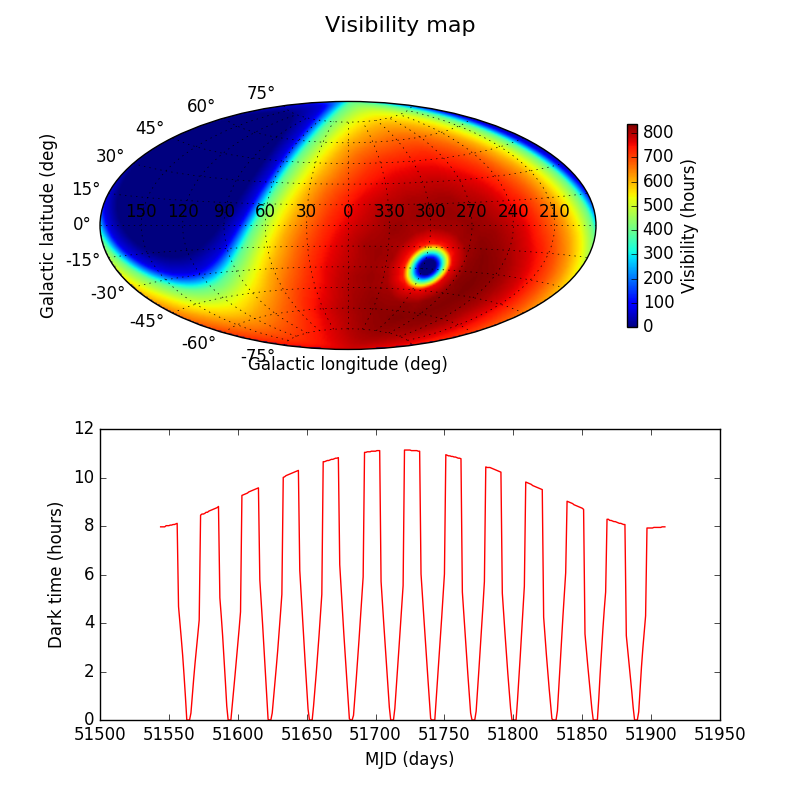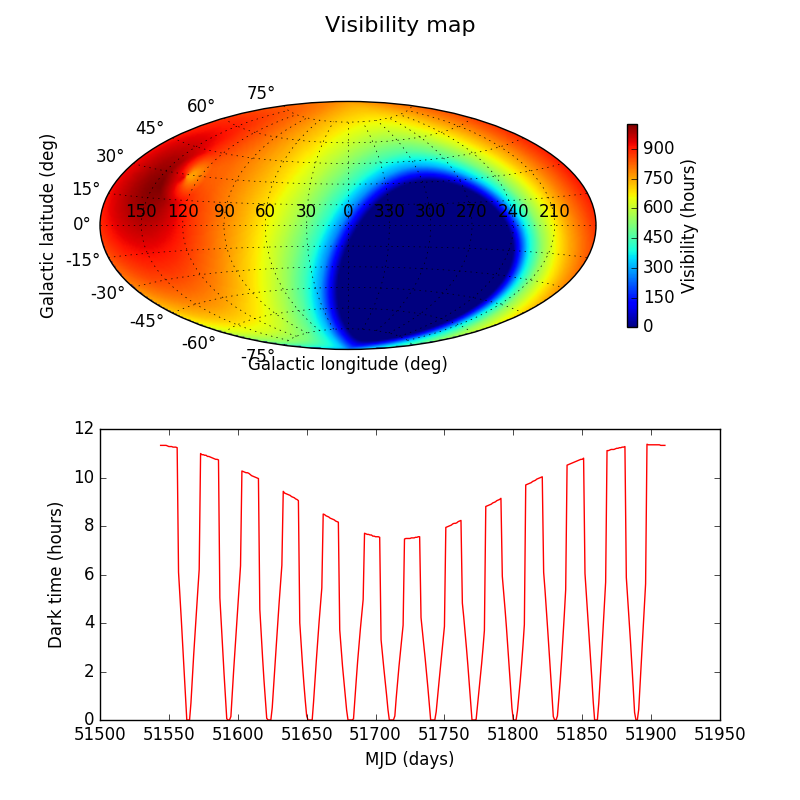Action #3065
Add moon constraint to csviscube
| Status: | Closed | Start date: | 11/14/2019 | |
|---|---|---|---|---|
| Priority: | Normal | Due date: | ||
| Assigned To: | % Done: | 100% | ||
| Category: | - | |||
| Target version: | 1.7.0 | |||
| Duration: |
Description
So far the csviscube only has a Sun constraint. A moon constraint should be added.
In the CTA scheduler, Pep Colomé mentioned that they take into account the sky brightness as a function of Moon altitude, Moon-target distance, and Moon phase.
So far there exists a moonzenith parameter that is however not yet used. It looks like a parameter that limits the sky brightness would be more appropriate. A moon model can for example be found in Britzger, D. (2009) (studies of the Influence of Moonlight on Observations with the MAGIC Telescope. Diploma thesis Universitat München. https://magicold.mpp.mpg.de/publications/theses/DBritzger.pdf). An alternative an simpler moon model can be found in 1991PASP__103_1033K.pdf.
According to https://arxiv.org/pdf/1704.00906.pdf, MAGIC observations are typically done up to 12 times NSB_dark, where NSB_dark are the NSB conditions towards the Crab with no moon in the sky.
A much more simple scheme is used in SSTillumination.pdf. Here, the fractional lunar illumination (FLI) is used, which is fraction of the lunar disk that is illuminated at local civil midnight. In ESO standards, lunar dark time is when FLI < 0.4. Nevertheless, even if the moon illumination is small, a minimum distance to the moon should probably be respected (the MAGIC paper speaks about 20 deg). Hence it would make sense to add to more parameters to csviscube:
- moondist: the minimum distance from the moon
- flimax: the maximum allowed FLI
Recurrence
No recurrence.
History
#1
 Updated by Knödlseder Jürgen over 5 years ago
Updated by Knödlseder Jürgen over 5 years ago
- File viscube_south.png added
- File viscube_north.png added
- File viscube_south_womoon.png added
- File viscube_north_womoon.png added
- Status changed from New to Pull request
- Assigned To set to Knödlseder Jürgen
- Target version set to 1.7.0
- % Done changed from 0 to 100
moonzenith, which is a minimum zenith angle required for the Moon, similar to the constrain of the Sun. If the Moon is higher in the sky than this zenith angle, the corresponding times are excludedmaxfli, which is the maximum fraction of lunar illumination. If the fraction of lunar illumination is below this threshold, no Moon constraint is applied
I also added a binary extension table to the output FITS file that contains a number of parameters as function of time. Parameters include the Sun and Moon positions, the lunar elongation and fraction of illumination, and the dark time.
I also added a script show_viscube.py to display the visibility cube integrated over all zenith angles and the dark time as function of time. Below the results for the South site (geolon=79.4041, geolat=-24.6272) and the North site (geolon=17.8900, geolat=+28.7619) for sunzenith=105.0, moonzenith=90 and maxfli=0.4 (which are the default parameters) for one full year. In addition, results are also show for moonzenith=0 to illustrate the impact of the Moon constraint.
| moonzenith | South | North |
| 90 |  |
 |
| 0 |  |
 |
#2
 Updated by Knödlseder Jürgen over 5 years ago
Updated by Knödlseder Jürgen over 5 years ago
- Status changed from Pull request to Closed
Merged into devel.




